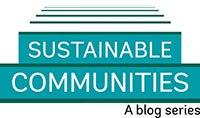What does it take to prevent or mitigate the impact of natural disasters?
For many, disaster resilience is all about better infrastructure, efficient early warning systems, and stronger institutions. While those aspects are obviously crucial, we shouldn’t overlook the role of communities themselves in preparing for and responding to disasters. After all, the success of both preparedness and recovery efforts depends largely on local residents' ability to anticipate risk, on their relationship with local and national authorities, and on the way they organize themselves when disaster strikes. In the aftermath of a catastrophe, rebuilding not just the physical environment but also the livelihoods of people is also essential, including through effective social protection systems and safety nets.
In this video, Senior Social Development Specialist Margaret Arnold explains how the World Bank is working with client countries and local communities to bring the social dimension of disaster risk management to the forefront.
[[avp asset="/content/dam/videos/ecrgp/2018/jun-13/the_social_side_of_disaster_resilience_hd.flv"]]/content/dam/videos/ecrgp/2018/jun-13/the_social_side_of_disaster_resilience_hd.flv[[/avp]]
For many, disaster resilience is all about better infrastructure, efficient early warning systems, and stronger institutions. While those aspects are obviously crucial, we shouldn’t overlook the role of communities themselves in preparing for and responding to disasters. After all, the success of both preparedness and recovery efforts depends largely on local residents' ability to anticipate risk, on their relationship with local and national authorities, and on the way they organize themselves when disaster strikes. In the aftermath of a catastrophe, rebuilding not just the physical environment but also the livelihoods of people is also essential, including through effective social protection systems and safety nets.
In this video, Senior Social Development Specialist Margaret Arnold explains how the World Bank is working with client countries and local communities to bring the social dimension of disaster risk management to the forefront.
[[avp asset="/content/dam/videos/ecrgp/2018/jun-13/the_social_side_of_disaster_resilience_hd.flv"]]/content/dam/videos/ecrgp/2018/jun-13/the_social_side_of_disaster_resilience_hd.flv[[/avp]]




Join the Conversation